Retaining wall problems and solutions: 5 common issues to avoid with your garden structures
These are the common retaining wall problems and solutions you should know about before starting your build
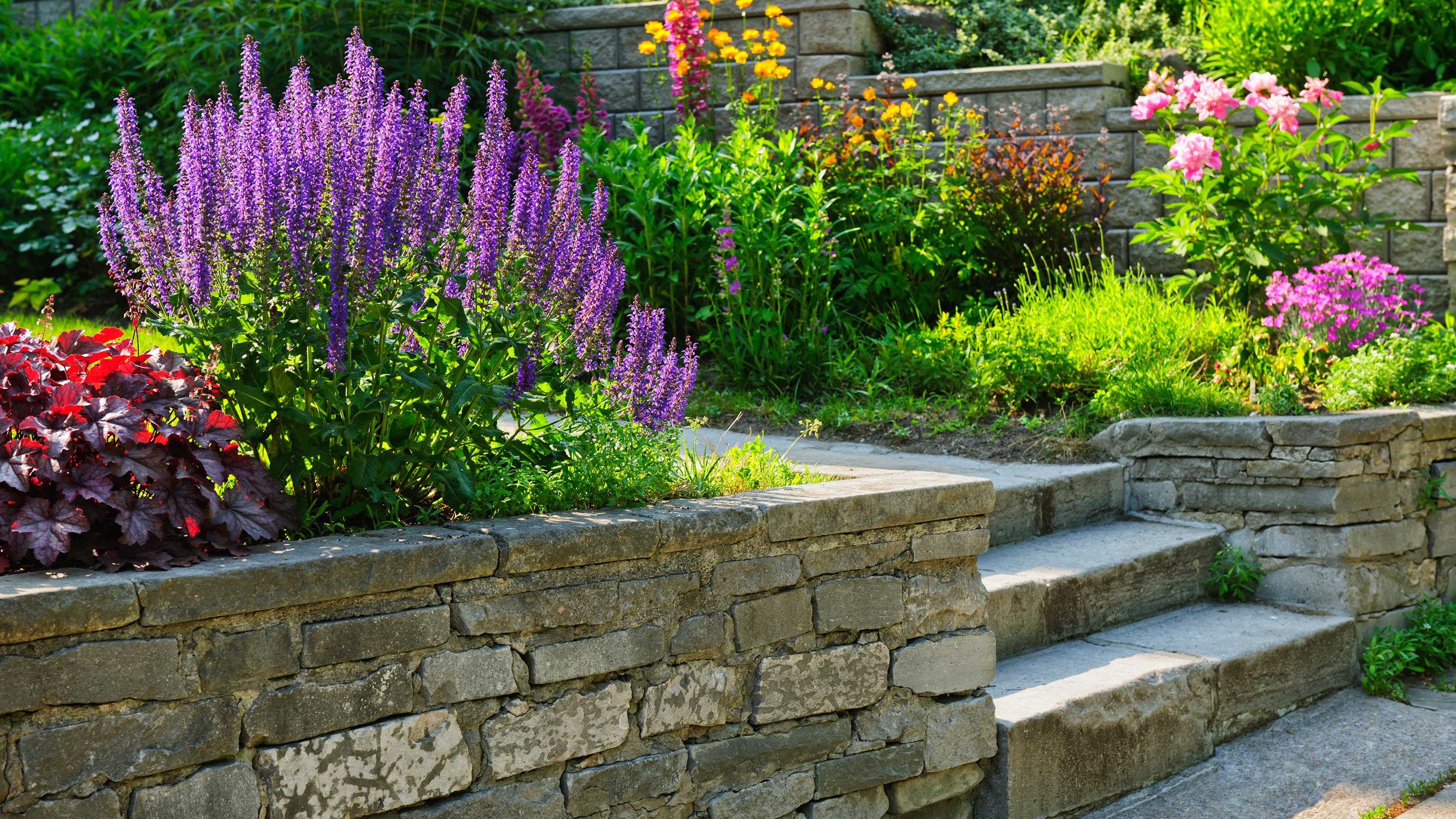

It's well worth knowing the common retaining wall problems and solutions if you're looking to add these structures to your plot. A go-to solution for tiering spaces into functional and stylish levels, retaining walls are a key part of landscape design for sloping gardens. But, get the construction wrong, and instead of your dream makeover, you could be facing disaster.
'Over the years, some of the most common problems we've seen with retaining walls are caused by poor drainage, foundation issues, or badly executed construction,' explains Luke Dejahang, CEO of Crown Pavilions. You're much more likely to end up with structurally sound retaining wall ideas if you know what mistakes to look out for from the get-go – which is why we've rounded up the things to avoid and what to do instead.
5 retaining wall problems and solutions that will help ensure success for your outdoor project
'Retaining walls in gardens can look aesthetically pleasing and be super practical. However, they can come with numerous problems, especially if they aren't properly planned and executed,' says Huz Member, Director at Buildworld. So, if you've decided to go for this approach for your garden wall ideas, the information below will definitely come in handy.
1. Not providing proper drainage
'Perhaps the biggest problem with retaining walls is poor drainage, which in turn means saturated soil,' reveals Huz.
'Wet soil adds extra weight and can put additional strain on the wall if not designed properly,' explains Luke Dejahang of Crown Pavilions. What's more, if it freezes and then thaws, it can cause extra pressure.
'Therefore, it's important to add adequate drainage so the water can leave the structure,' says Luke. 'Using materials such as crushed and pea gravel, and adding more weep holes, can provide proper drainage.' Weep holes should be drilled horizontally along your wall at intervals and will allow water to drain through. Taller walls may need them situated vertically, too. Bear in mind that some types of retaining walls, such as gabion styles, are naturally better at providing drainage.
You can also install a perforated drainage pipe behind the length of your retaining wall which then slopes to an outlet location.
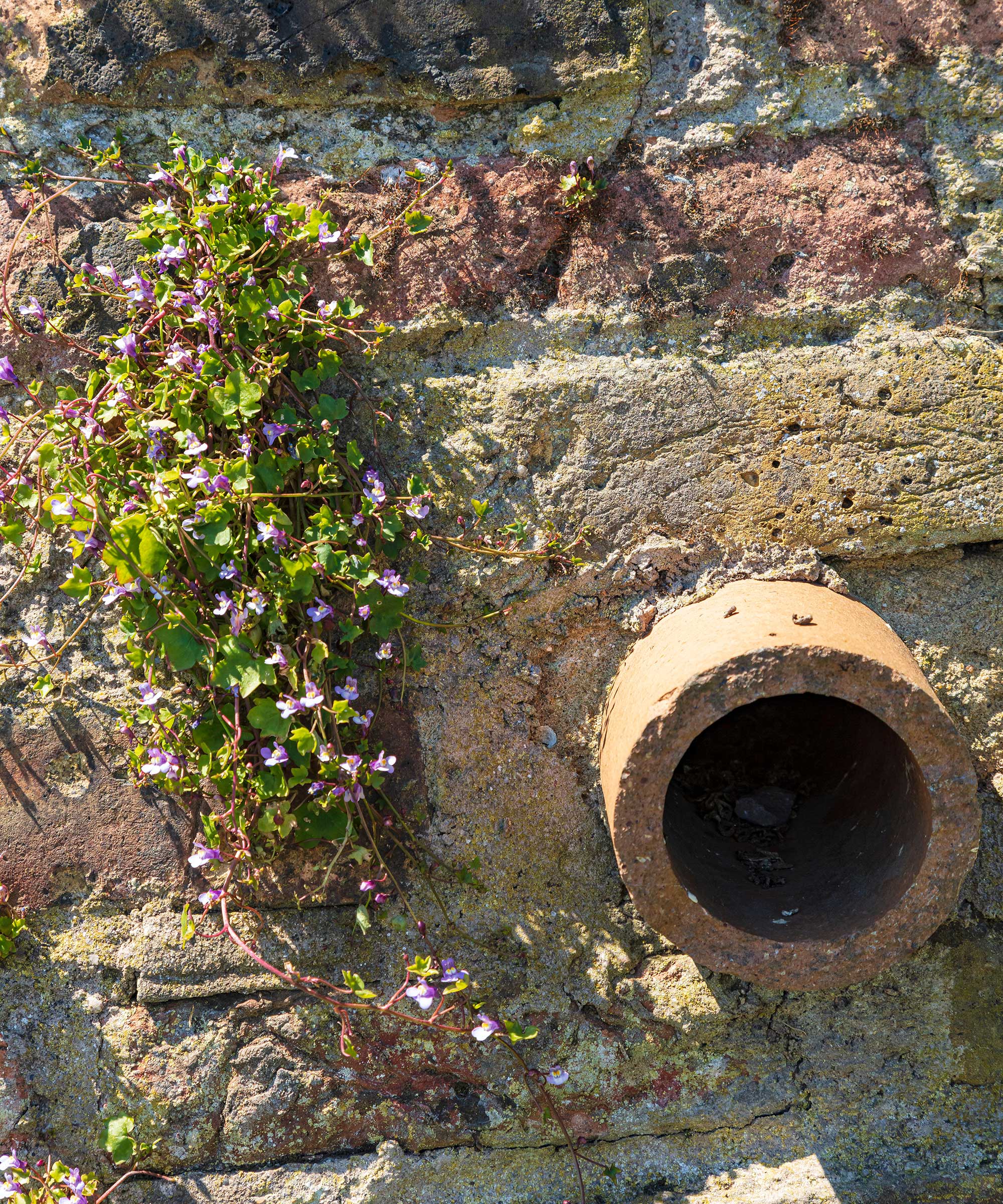
A drainage pipe outlet in a retaining wall
2. Not building on a sturdy foundation
Whether you're going for retaining stone garden wall ideas or using timber, it's crucial to ensure you're building them on a reliable base.
'Similar to any other structure, the foundation is incredibly important in maintaining the wall,' says Luke of Crown Pavilions. 'To make sure the foundation is sturdy, it needs to be deep enough to resist any heavy weight.' As a general rule, it should also be twice the width of the wall you are building, with the wall placed in the center.
Thomas Goodman, property and construction expert at MyJobQuote.co.uk, adds, 'To prevent cracks in a concrete wall, you should place footings underneath the wall in the form of crushed rock or even a thick layer of compacted gravel. This is especially important in dry soil conditions.' You can also use a layer of concrete.
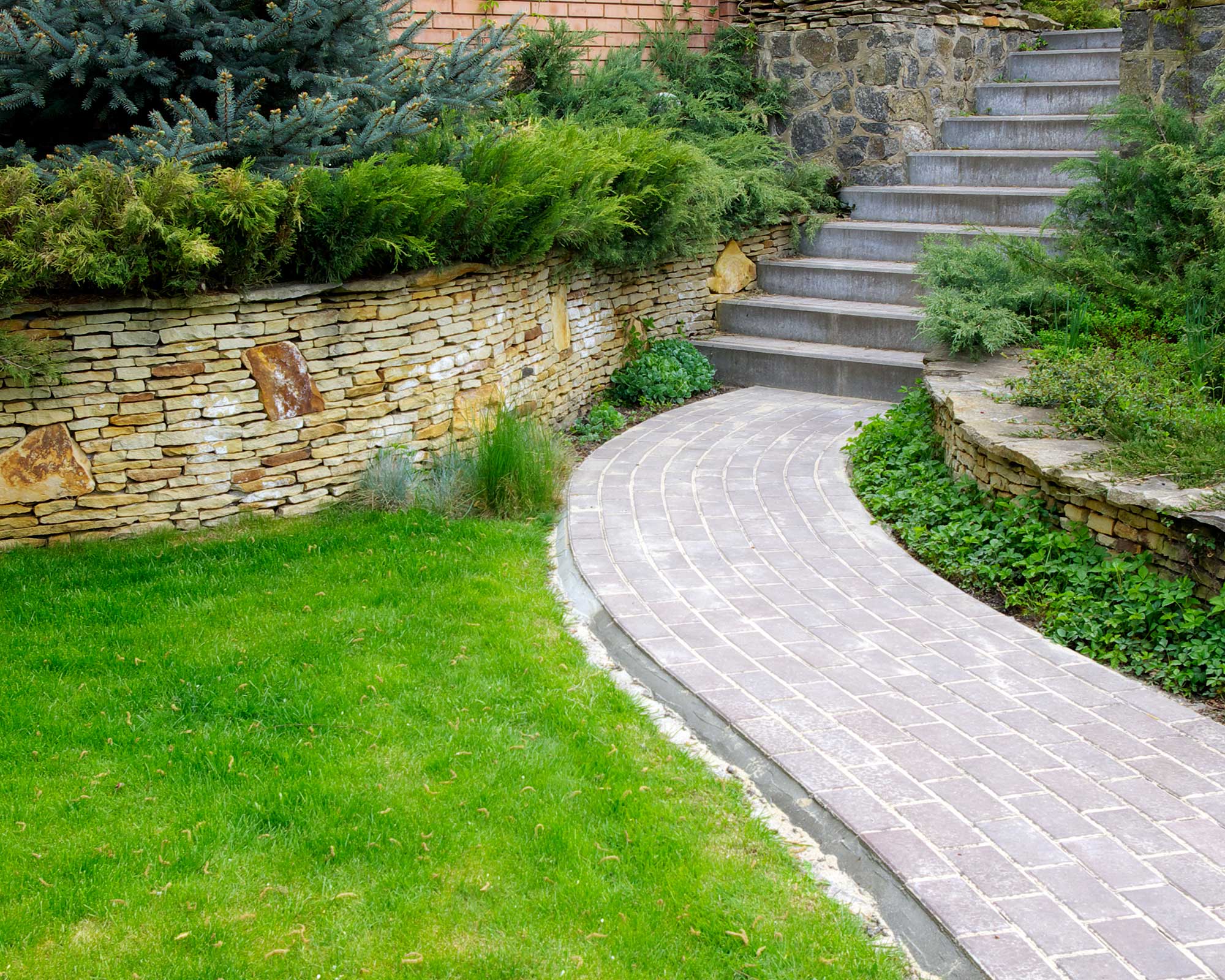
Ensure your wall is built on a sturdy base
3. Picking the wrong plants
'Other problems include unsuitable plants,' says Huz Member of Buildworld.
We've stressed the importance of drainage when building a retaining wall. And that means you'll need to opt for plants that suit. Luckily there are lots of drought-tolerant plants available that offer textural interest and dazzling color (and are low-maintenance, too).
Also, think about the roots of your plants. Large shrubs or trees with fast-growing, wide-spreading roots should be avoided as they can damage the structure of your wall over time. An Italian poplar, for instance, would not be a good choice.
And, if you're using concrete or limestone gravel for your wall's construction, bear in mind that this will affect the soil, making it more alkaline. For that reason, stay away from acid-loving plants, such as azaleas, rhododendrons, and hydrangeas. Otherwise, you'll be fighting a constant battle in trying to keep the pH low enough for them to thrive.
You can find some of our picks for the best plants for garden walls in our guide.
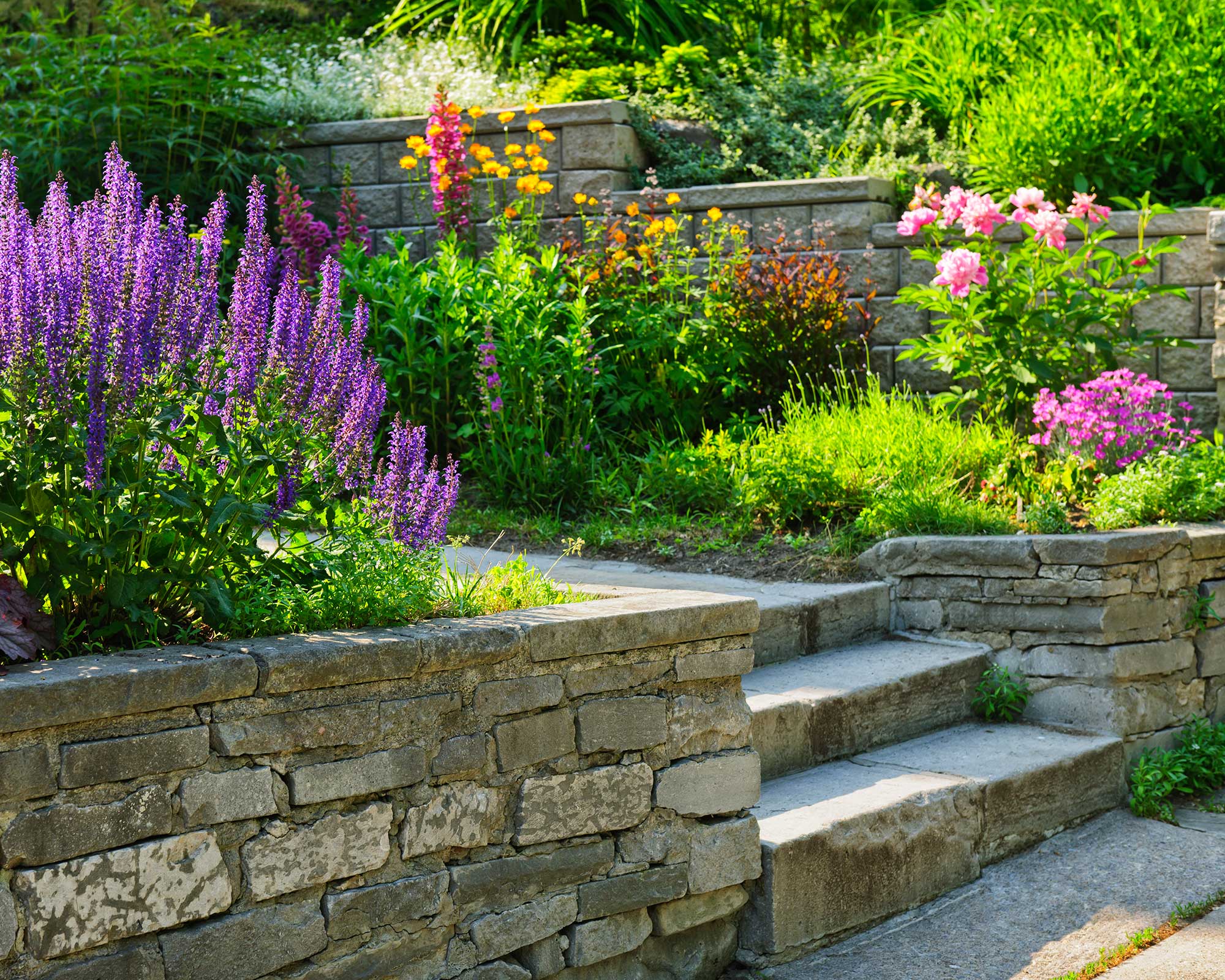
Drought-tolerant plants tend to be a good match for retaining walls
4. Building too high without extra support
'When building a retaining wall, you need to make sure your retaining wall is not too high, and that the height works with the type of soil you have,' says Thomas Goodman.
'If you wish to build a retaining wall that is higher than four feet, construction care becomes even more important, as instability is more likely to occur when a wall is built to an excessive height and is not adequately supported.
'This is especially important for higher timber retaining walls, as this type of wall must be built much stronger,' continues Thomas. 'This involves adding deadman timbers and anchors to prevent the wall from eventually leaning out due to underground pressure.' You may also need to extend the footing.
And a side note: in many states, you will need a building permit and the services of an engineer for walls this high or above (although it's always worth checking if you need one in your area for smaller walls, too). This is the case for both backyard and front garden walls.

The taller the wall, the more pressure it will need to be able to endure
5. Not picking the best contractor for the job
'Lastly, if you are paying someone to build your garden retaining wall, make sure you do your research and communicate with the contractor,' says Luke Dejahang.
It's also crucial to consider your budget realistically, and if necessary, compare a few quotes before you get started. You can find lots of useful advice on the costs of landscaping in our guide. And before work begins, ensure you and your chosen landscaper or builder are on the same page.
'The key to creating a retaining wall is ensuring it becomes an architectural and functional feature in your garden, so make sure you find someone who can execute this,' says Luke. Take time choosing a material that, as well as being sturdy, will complement the surroundings for a harmonious look.
This way, you can ensure a beautiful design and reduce the risk of issues or added expenses down the line.
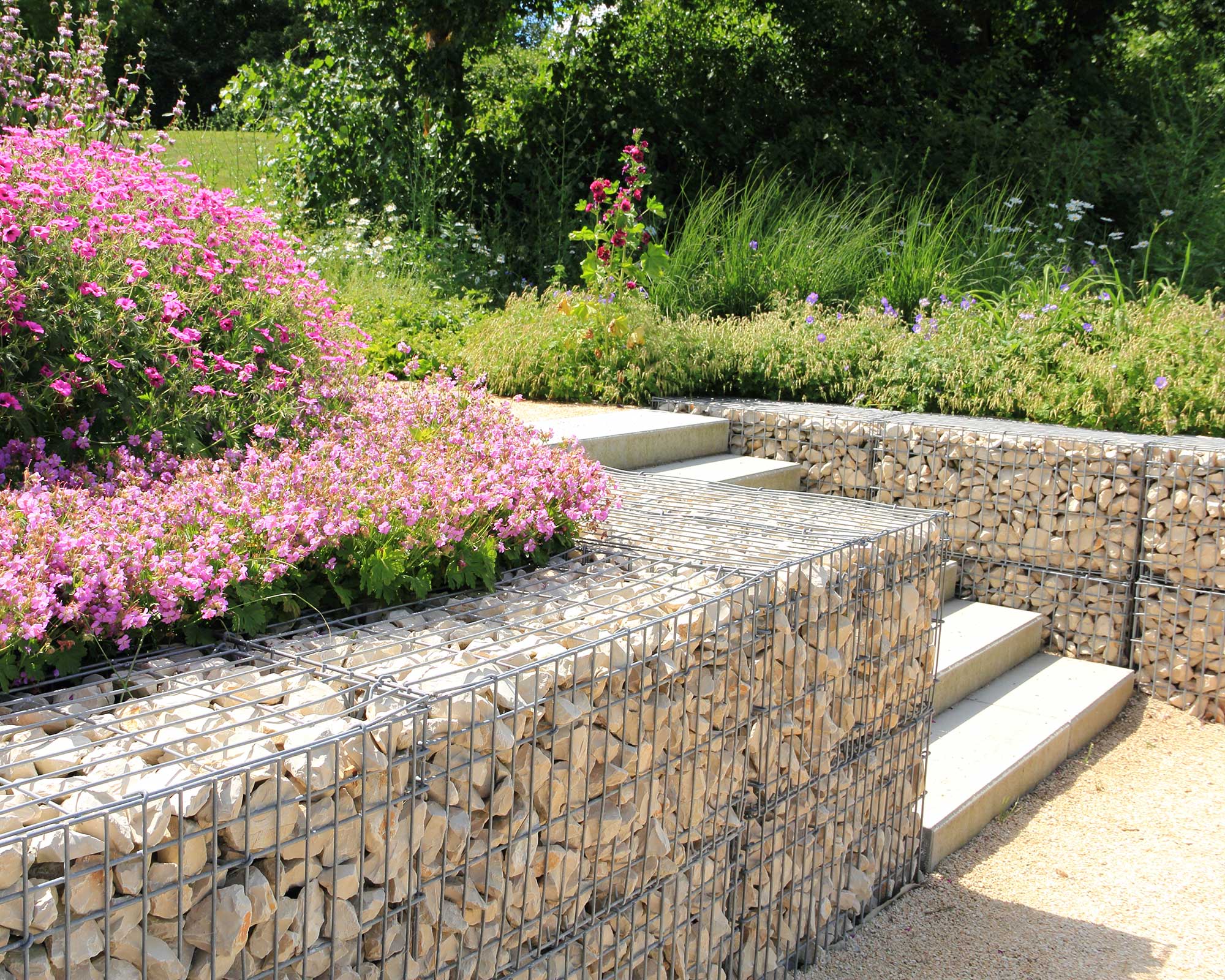
These gabion walls offer a modern and texturally interesting aesthetic
How do you know if a retaining wall is failing?
'Issues with garden retaining walls can vary greatly depending on the damage caused,' says Luke. 'The most prominent signs that a retaining wall is not functioning are leaning, cracking, or bulging.' Keep an eye on the weep holes, too – if no water appears from them after rainfall, it's a sign that your draining system may be inadequate.
Of course, the worst-case scenario is that the wall collapses entirely. Not only can this be costly and time-consuming to repair, but it can also be very dangerous. So, check your wall regularly for signs of problems, so you can try and remedy the issue before further damage occurs.
How much does it cost to repair a retaining wall?
Although you may have the skills on how to build a garden wall, when it comes to repairs, it's often best to call in a pro, and as soon as possible.
According to HomeAdvisor, the cost for repairing a retaining wall varies from $800 to $1,000 on average (approximately £584–£730) – slightly more than usual wall repairs. Large projects, however, can cost up to $20,000 (around £14,601).

The garden was always a big part of Holly's life growing up, as was the surrounding New Forest where she lived. Her appreciation for the great outdoors has only grown since then. She's been an allotment keeper, a professional gardener, and a botanical illustrator – plants are her passion.
